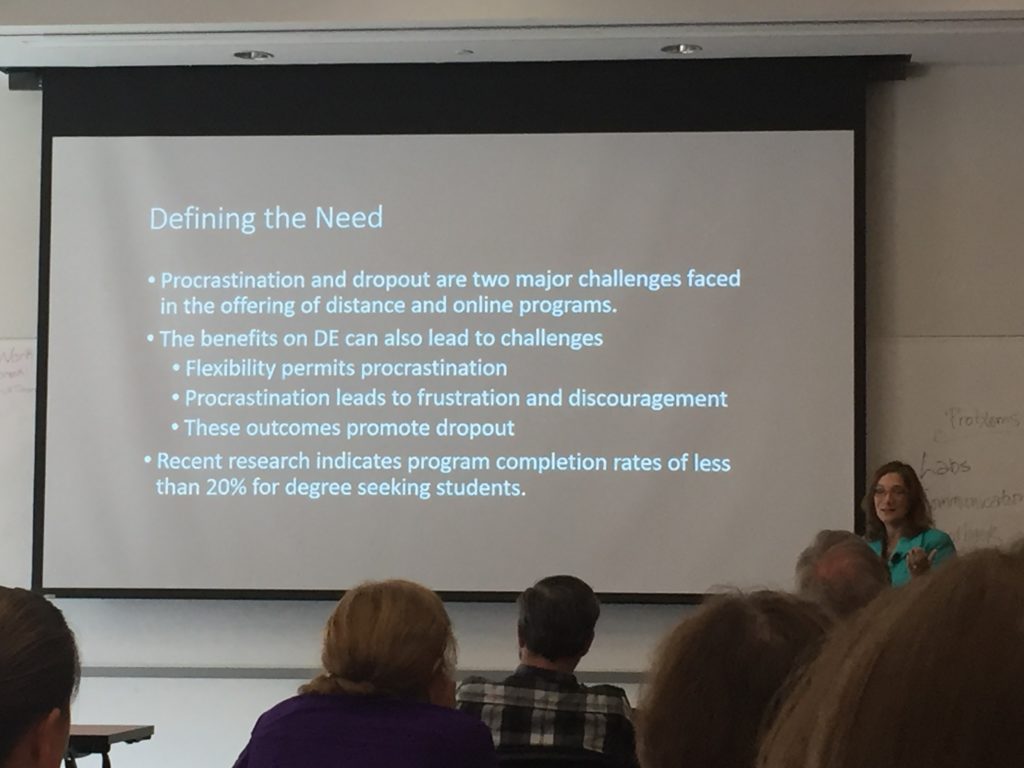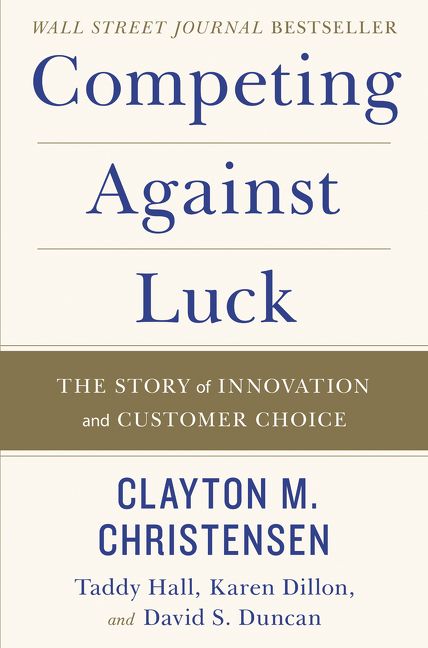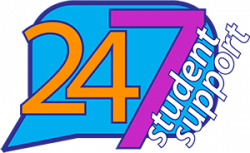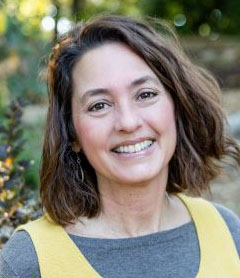So two related things happened this past week:
- I finished a book by Harvard business professor Clayton Christensen — “Competing Against Luck: The Story of Innovation and Customer Choice,” — one of the books recommended during the Data-Driven Innovation Boot Camp at RAMP, the new business accelerator in downtown Roanoke. I wrote about my top takeaway from that training here.
- I attended the 5th annual Instructional Technology Mini-Conference here on the Virginia Western campus. Our own Dr. Carrie Halpin has done an amazing job organizing these annual summer conferences, which have been funded by the Paul Lee Professional Development grant from the VCCS. The keynote speaker was Dr. Barbara Lockee, a professor from the Instructional Design and Technology program at Virginia Tech. Her keynote focused on adult online learners.
Honestly, I could write essays about each of those experiences and how they relate to Virginia Western, but I wanted to boil down some highlights into three powerful numbers specifically about online learning:
1.

First, the ugly number: Research shows completion rates of less than 20% for degree-seeking students in distance/online programs. That stat is from Dr. Lockee of Virginia Tech, who delivered the keynote talk at the mini-conference: “The Magic is in the Mix: Strategies for Engaging and Retaining Adult Online Learners.” She focused especially on procrastination as a challenge — but noted that simply sending automated reminders about assignments/tests/etc. have been an effective way to help keep students on track.
Dr. Lockee also talked at length about the five magic ingredients to help with completion: (1) Relevance (adult learners need experiences that align with their motivation and interests … what’s their goal?) (2) Flexibility (adult learners have busy lives and demand more convenience and flexibility … can learning be made mobile? Could you use different formats, such as audio or podcasts? Can deadlines be made more flexible?) (3) Clear expectations (students should understand how the course works) (4) Responsiveness (how can students get assistance throughout the course? What other resources are available for support?) (5) Community (learning is a social experience, but realize interaction has different purposes and not all students are alike).
Dr. Lockee said her biggest failure and challenge as online instructor has been facilitating group projects. However, she did share a helpful tool for better engagement: FlipGrid — a *free*, easy-to-use video discussion platform. Check out FlipGrid here.

2.
In a 2016 survey, 95% of graduates of Southern New Hampshire University said they would go through their online-only program all over again. That stat came from the “Competing Against Luck” book by Christensen, the Harvard professor who dedicated almost an entire chapter exploring SNHU. The private, nonprofit school has been celebrated as not only one of the most innovative colleges in America, but as one of the most innovative organizations *in the world* (Fast Company, 2012). Christensen spotlighted SNHU to illustrate his “Jobs to Be Done” theory. In a nutshell, Christensen argues that innovation success is not driven by better understanding customers, but by understanding the job that customers have “hired” a product or service to do for them.
For example: Christensen notes the president of SNHU asked: What job were students hiring SNHU to do? Two answers emerged, and they broke down by lifestage. During recruitment events and tours, traditional, high-school-aged students were asking questions about the coming-of-age experiences they hoped to have on campus (sports? climbing walls?), not the functional part of their education.
Non-traditional students (average age of 30), who “already had all of the coming-of-age experiences they can handle,” wanted (1) convenience, (2) customer service, (3) credentials, and (4) speedy completion times. “The job they were hiring a university to do was to provide them with credentials that would improve their professional prospects as quickly and efficiently as possible.”
3.
So that leads me to the third number. After exploring the jobs that students wanted SNHU to do, the college realized all of their existing structures, policies and procedures were not designed to support nontraditional online learners. And they realized their generic, one-size-fits all approach to recruiting potential students was missing the mark. In response, SNHU’s president led a session of 20 top online faculty and administrators to chart out their entire admissions process, from the first question from an interested student to the first class, and addressed the hurdles for online students. Mailed packets of information — and generic email responses — were replaced with follow-up phone calls in under 10 minutes of inquiry. Not a few days or even 24 hours. The school’s goal is to call back potential students in under 10 minutes. As the author notes, “[t]alking to a live human being, within minutes or hours, is a completely different experience from arriving home after a long, hard day at work to find a big white envelope nestled among the junk.” But the university’s answer isn’t just an immediate, sales-y phone call. “You can uncover and surface a lot of anxiety issues,” SNHU’s president says in the book, “so those calls are with a well-trained counselor with all the information he needs at his fingertips [to help the student overcome whatever obstacles they’re facing]. Calls can go on for an hour, an hour and a half. At the end of the call, you’re engaged with us. And we know you’re much more likely to enroll.”
The calls also aim to remove as many burdens for the busy adult as possible. During these phone calls, counselors get permission to acquire any existing transcripts (and pay the nominal fees to do that), so the student doesn’t have to worry about that piece. Any questions about credit transfers and financial aid should be resolved within days. The school also pairs each student with a personal adviser to notice any red flags and keep in touch throughout their academic journey. The result? In 2016, there were more than 75,000 SNHU students in 36 states and from countries around the globe, and their online division employed about 1,200 staffers. In fiscal 2016, they brought in $535 million in revenues, a 34% compounded annual growth rate over the previous 6 years. Annual surpluses have helped the nonprofit college keep tuition affordable.
If you’re hungry for more, I suggest exploring the Southern New Hampshire University website.
For more about business innovation, I really do recommend the “Competing Against Luck” book, which is available in the Roanoke public library. You might also enjoy my previous blog post about the Data-Driven Innovation Boot Camp at RAMP.
And as always, the grants office would be happy to help you develop a proposal for a Paul Lee Professional Development grant, a Virginia Western Educational Foundation Innovation Grant, or some other funding opportunity. Come see me!
— Stephanie Ogilvie Seagle, sseagle@virginiawestern.edu






 Shelley Lyons is glad to be back on campus as she is a Virginia Western alum, and has served as the Administrative Officer for Grants Administration at Virginia Western since early 2022. Prior to VWCC, her career focus was within the Human Services and Arts fields. She wrote her first grant in 1996 on a whim and has continued to plan and learn since that time. She most enjoys seeing a well-planned project come to fruition, where funder, project manager and beneficiaries can all feel success and see impact.
Shelley Lyons is glad to be back on campus as she is a Virginia Western alum, and has served as the Administrative Officer for Grants Administration at Virginia Western since early 2022. Prior to VWCC, her career focus was within the Human Services and Arts fields. She wrote her first grant in 1996 on a whim and has continued to plan and learn since that time. She most enjoys seeing a well-planned project come to fruition, where funder, project manager and beneficiaries can all feel success and see impact.